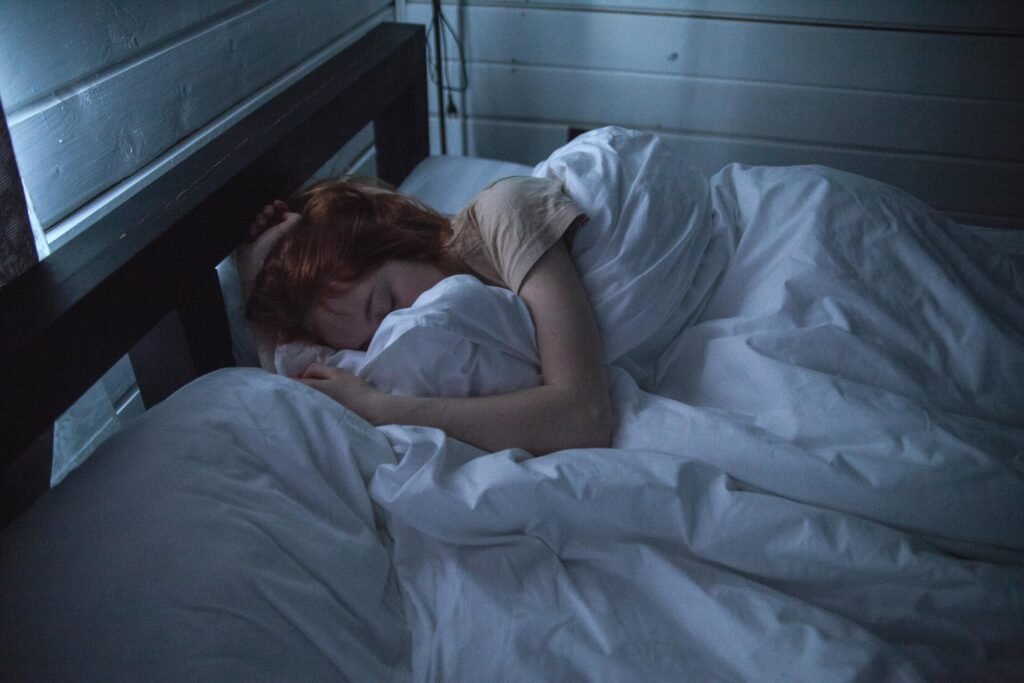Red light therapy appeals for its gentle and natural approach. It helps relieve sleep disorders and insomnia while reducing stress. By acting progressively, this light therapy promotes restorative sleep and eases accumulated tension. Used as a non-medicated alternative, it draws the attention of many researchers and users. Its growing role in modern well-being confirms its importance in the search for simple and effective solutions.
What is red light therapy?
Red light therapy refers to the use of a specific light aimed at restoring internal balance. Unlike blue light, known for stimulating wakefulness, it fosters a state of relaxation conducive to rest. While natural light supports energy during the day, red light focuses on calmness and relaxation while respecting the body clock. This simple technology becomes a daily ally for those seeking to regulate their internal rhythm effortlessly.
In this context, red light stands out as an innovative alternative to imbalances caused by prolonged screen exposure. Blue light from screens often disrupts the biological clock, leading to difficulty falling asleep. Red light therapy naturally corrects these disturbances by stimulating internal cycles. Unlike natural daylight that awakens, red light prepares the body for rest. This contrast makes it valuable for maintaining a smooth transition between activity and recovery, without disturbing the nervous system.
Thus, red light therapy plays a key role in regulating the internal clock that structures our days. By supporting a harmonious alternation between wakefulness and rest, it promotes a progressive and natural adjustment. This regulation limits the negative effects of blue light and sustainably improves sleep cycles. It is precisely this balancing effect that attracts both experts and users looking for a gentle solution, free of stimulants or sleeping pills, to regain quality sleep.
How does red light act on the body?

Red light directly influences the body’s internal processes. When it reaches the retina, it sends a signal to the internal clock. This mechanism regulates the secretion of melatonin, the sleep hormone. The more melatonin circulates, the easier falling asleep becomes, naturally and progressively. The brain then understands that rest is approaching, improving sleep quality. This gentle action supports biological balance without relying on artificial aids.
Melatonin secretion is not the only effect of red light. It also acts on the production of serotonin, a neurotransmitter linked to well-being. A balance between serotonin and melatonin ensures a smooth cycle between wakefulness and rest. These substances work together to maintain stable sleep patterns. Their combined action creates fluid regulation, essential for a healthy circadian rhythm. The body then benefits from deeper rest and more effective recovery.
The circadian rhythm, often disrupted by artificial light, is rebalanced with regular exposure to red light. Sleep cycles align better with biological needs. This reduces confusion between wake and rest phases. At the same time, lower cortisol levels promote deep relaxation. This drop in the stress hormone eases tension. The body regains a calm state conducive to restorative nights.
How to use red light therapy for sleep

Establishing a proper routine is essential to benefit from the effects of red light. A regular exposure of twenty minutes is often enough. In the evening, this ritual becomes particularly effective in preparing the body for rest. Before bedtime, the internal biological clock interprets red light as a slowing signal. The brain secretes melatonin more easily, which promotes falling asleep. This gentle framework eases the transition from activity to restorative sleep.
The position facing the lamp directly influences the results. At fifty centimeters away, the light reaches the receptors without visual discomfort. This even diffusion supports hormonal regulation and facilitates sleep onset. In the evening, exposure helps align sleep rhythm with natural needs, limiting nighttime awakenings and deepening rest.
The frequency of use depends on individual needs. Three to four sessions per week are generally sufficient, but daily use remains possible in cases of persistent insomnia. During travel, red light becomes useful against jet lag. It helps resynchronize the internal biological clock and reduces the effects of time zone shifts. Night awakenings ease, and the circadian rhythm regains consistency. This natural support offers a gentle alternative to sleeping pills and sustainably improves sleep quality.
Benefits of sleeping with red light

The benefits of using red light for sleep problems appear from the first nights. It improves sleep quality by promoting a more natural sleep onset. This gentle light reduces night awakenings by stabilizing internal cycles. The body thus benefits from a rhythm better aligned with biological needs. Sleepers experience more effective recovery. The sense of rest becomes deeper, reducing accumulated fatigue.
Red light also enhances deep, restorative sleep. It promotes a regular cycle that prolongs the essential phases of rest. The nervous system and muscles gain more time to regenerate. Memory and concentration also improve thanks to restorative sleep. Insomnia becomes less frequent as hormonal regulation stabilizes. Sleeping with red light therefore offers a natural alternative for regaining more consistent and satisfying sleep.
Another advantage lies in reducing daytime sleepiness. People suffering from poor sleep quality notice increased alertness. Fewer nighttime awakenings lead to more active days. Likewise, red light helps reduce the impact of chronic insomnia. It supports daily energy without dependence on medication. Regular use transforms the night into true recovery time. Users thus gain lasting vitality and balance.
Red light therapy and stress reduction

Red light acts directly on the nervous system. It helps reduce stress by creating a relaxation signal for the body. This gentle action promotes calm and eases tensions accumulated during the day. Anxiety levels gradually decrease thanks to this light stimulation. The atmosphere created encourages inner peace. The body then adapts to a smoother transition toward rest. The experience remains simple and accessible to all.
Stress reduction goes beyond the time of use. Regular practice improves emotional stability in daily life. Nervous tension decreases sustainably. Periods of anxiety become less overwhelming, allowing better emotion management. The relaxation induced by red light fits into a virtuous cycle. The more the body adapts to this calm state, the more receptive it becomes. This continuity strengthens trust in a simple, non-invasive method.
Precautions and recommendations for use
Even though red light therapy is gentle, certain precautions must be respected. Overexposure can disrupt the sleep cycle. Sessions should remain short and regular. About twenty minutes is sufficient in most cases. Red light should be used as a complement to healthy habits. It should not replace proper sleep hygiene needed for stable rest.
Choosing the right red light therapy lamp is essential for effective and safe use. Available models vary in intensity and format. A lamp that is too powerful may cause visual discomfort, while a home model often provides several suitable settings. Beyond choosing the lamp, a few practical precautions are necessary. For example, maintaining an appropriate distance, often around fifty centimeters, helps ensure even diffusion and reduces the risk of discomfort.
Red light therapy is a natural solution to promote sleep onset and reduce stress. Its regular use improves sleep cycles, lowers tension, and adapts to individual needs. By respecting personal rhythms, it becomes a reliable and safe tool. Today, this light therapy stands as a simple ally for a good night’s sleep and lasting inner balance.

